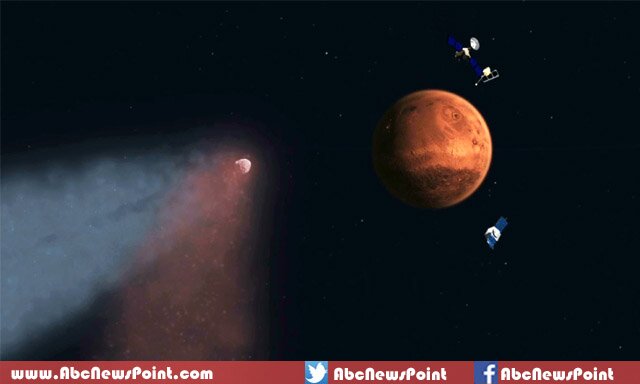Comet Siding Spring has Changed The Atmosphere of Mars
WASHINGTON – The comet was close to Mars in October lit up the sky “shooting stars” and changed the chemical composition of the atmosphere of the red planet, NASA revealed Friday.
Comet Siding Spring rose to just under 136,000 miles from Mars on October 19th.
The “eyes” of everything NASA and the European Space Agency had available to observe this phenomenon were pointed at the celestial body came from the outer solar system.
“We believe that this type of event occurs once every 8 million years,” said Jim Green, director of the Planetary Science Division of the US space agency.
By the way, the tail of the comet dumped thousands of pounds of dust in the Martian atmosphere, much more than originally planned.
Dust from the comet bombed the upper layer of the sparse atmosphere of Mars and “literally changed the chemical composition,” said Mr. Greene.
This phenomenon has been observed for the first time with this level of intensity, said Mr. Green, while ongoing analyzes should show if the changes are temporary or more permanent.
Measuring instruments detected ions including iron, magnesium and sodium, all of measured for the first time on an original comet Oort cloud, which lies in the outer suburbs of our solar system elements.
If humans had been on Mars to observe the phenomenon they would have seen an intense yellow halo in the sky, “he had no doubt there are thousands of meteors per hour,” gushed Nick Schneider, a scientist at the University of Boulder in charge of a satellite instrument MAVEN, which is in orbit around Mars.
Researchers are also welcomed to have sheltered behind the planet, the three artificial satellites that observe the time.
“It seems pretty obvious that they would not survive as we see the violent reaction of the atmosphere to the tail of the comet.”





























